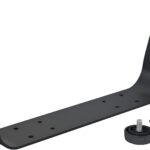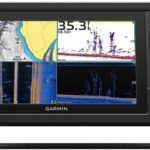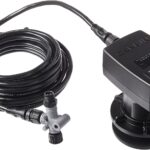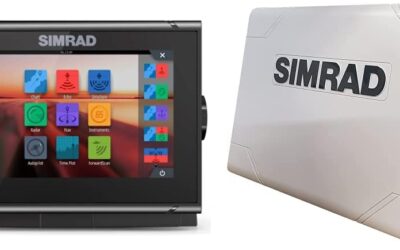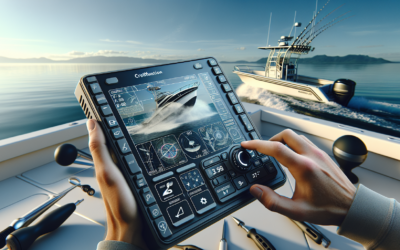When investing in a fish finder, it’s important to consider the post-purchase essentials, such as warranties and support. These crucial components can greatly enhance your overall experience and provide peace of mind knowing that any potential issues will be addressed promptly and efficiently. In this article, we will explore the importance of warranties and support in ensuring a seamless and enjoyable fishing adventure with your fish finder.
Ensuring Warranty Protection
Understanding the Importance of Warranties
When purchasing a fish finder, it’s crucial to recognize the importance of warranties. A warranty is a form of protection provided by the manufacturer or seller that guarantees the product’s quality and functionality. It serves as a safety net, ensuring that you won’t be left to deal with any potential issues or defects on your own. By understanding the significance of warranties, you can make more informed purchasing decisions and have peace of mind knowing that your investment is protected.
Types of Warranties Available
There are several types of warranties available for fish finders. The most common ones include:
- Manufacturer’s Warranty: This is the warranty provided directly by the manufacturer, covering any defects or malfunctions that may occur within a specific period after purchase.
- Extended Warranty: Some sellers offer the option to purchase an extended warranty, which extends the coverage period beyond the standard manufacturer’s warranty.
- Third-Party Warranty: In some cases, you may have the option to purchase a warranty from a third-party provider. These warranties often have their own terms and conditions.
Understanding the different types of warranties available can help you choose the right one for your needs and budget.
Warranty Coverage Periods
It’s important to note that different warranties have varying coverage periods. A typical manufacturer’s warranty may provide coverage for one to three years from the date of purchase. Extended warranties can extend this coverage for an additional period, often up to five years or more. Understanding the coverage periods of warranties is crucial because it determines the timeframe within which you can receive free repairs or replacements for your fish finder.
Reading the Fine Print
Before making a purchase, it’s essential to read the fine print of the warranty. This includes the terms and conditions, limitations, exclusions, and any additional requirements or obligations. By carefully reviewing the warranty, you can ensure that you fully understand your rights and responsibilities as a consumer. It will also help you identify any potential limitations or requirements that may affect your warranty protection.
Warranty Terms and Conditions
The terms and conditions of a warranty outline the specific rights and obligations of both the consumer and the manufacturer or seller. It’s crucial to familiarize yourself with these terms and conditions to ensure that you meet all the necessary requirements for warranty protection. This may include things like registering your fish finder, following proper maintenance procedures, and adhering to specific warranty claim processes. By understanding and adhering to the warranty terms and conditions, you can ensure that you receive the full benefits of the warranty.
Contacting the Manufacturer or Seller
In the event that you encounter any issues with your fish finder, it’s essential to know how to contact the manufacturer or seller for warranty claims. This may involve reaching out by phone, email, or through their official website. By promptly contacting the manufacturer or seller, you can initiate the warranty claim process and receive guidance on how to proceed. Keep in mind that different manufacturers or sellers may have different contact methods, so it’s important to familiarize yourself with the specific contact information before needing it.
Effective Utilization of Warranties
Registering Your Fish Finder
One of the essential steps in effectively utilizing your fish finder’s warranty is to register your product. This typically involves providing your contact information, the fish finder’s serial number, and other relevant details to the manufacturer or seller. Registering your fish finder ensures that you are officially recognized as the owner and enables the manufacturer or seller to track the warranty coverage period accurately. It’s a simple process that can save you time and hassle if you ever need to make a warranty claim.
Keeping Proof of Purchase
To validate your warranty, it’s crucial to keep a copy of the proof of purchase, such as a sales receipt or invoice. This documentation serves as evidence of your ownership and the date of purchase. Without proof of purchase, the manufacturer or seller may not honor the warranty, leaving you without any warranty protection. It’s advisable to keep the original receipt and make copies or store digital copies in a safe place to avoid losing them.
Familiarizing Yourself with the Warranty Process
Before any issues arise, it’s beneficial to familiarize yourself with the warranty process outlined in the terms and conditions. Understand the steps you need to take, such as contacting customer support, providing necessary documentation, and following any specific procedures for making warranty claims. By familiarizing yourself with the warranty process, you can be better prepared and avoid any delays or complications when dealing with warranty-related matters.
Following Warranty Claim Procedures
When making a warranty claim, it’s essential to follow the specified procedures outlined by the manufacturer or seller. This may involve submitting a warranty claim form, providing details about the issue, and attaching any required documentation, such as the proof of purchase and serial number. Adhering to the warranty claim procedures ensures that your claim is processed smoothly and increases the chances of a favorable outcome.
Providing Necessary Documentation
When making a warranty claim, it’s essential to provide all the necessary documentation requested by the manufacturer or seller. This may include the proof of purchase, product serial number, warranty registration details, and any relevant photographs or videos of the issue. Providing accurate and complete documentation helps expedite the warranty claim process and facilitates a smoother resolution to any problems you may encounter with your fish finder.
Utilizing Warranty Repair or Replacement Services
If your fish finder requires repair or replacement under warranty, it’s important to utilize the authorized repair or replacement services provided by the manufacturer or seller. These services are specifically trained and equipped to handle warranty-related issues, ensuring that your fish finder is repaired or replaced to the required standards. Avoid attempting unauthorized repairs yourself, as this may void the warranty and potentially cause further damage to the device.
Securing Additional Support
Benefits of Post-Purchase Support
Alongside warranties, post-purchase support services play a vital role in ensuring a smooth ownership experience with your fish finder. Post-purchase support provides you with access to assistance, troubleshooting, and guidance throughout the lifespan of your product. The benefits of post-purchase support include timely resolution of issues, support in navigating technical difficulties, and access to valuable resources and information that can enhance your fish finder’s performance.
Types of Support Services
Post-purchase support services can vary depending on the manufacturer or seller. Common types of support services include phone or email support, online chat, video tutorials, and user manuals or guides. Some manufacturers or sellers may also offer on-site support or ship replacement parts if necessary. Understanding the different types of support services available allows you to take full advantage of the resources and assistance at your disposal.
Accessing Customer Support
When seeking post-purchase support, it’s crucial to know how to access customer support. This may involve contacting the manufacturer or seller’s customer support team through designated phone numbers, email addresses, or online contact forms. The availability of customer support and the preferred contact methods may vary, so it’s advisable to review the manufacturer’s or seller’s website or documentation for specific instructions on accessing customer support.
Contact Methods for Assistance
Manufacturers or sellers may provide various contact methods for obtaining assistance. These can include phone support, email support, live chat, or even social media channels. Consider your preferences and the urgency of your issue when choosing the most suitable contact method. Phone support may offer a more immediate response, while email support allows for the exchange of detailed information. Live chat is a convenient option for quick inquiries, and social media channels may provide additional support avenues or community interactions.
Utilizing Online Resources
Many manufacturers and sellers provide online resources to assist fish finder owners with troubleshooting, maintenance, and other common issues. These resources can include FAQs, knowledge bases, support articles, video tutorials, and user forums. By utilizing these online resources, you can often find answers to common questions or solutions to minor problems without the need to contact customer support directly. Online resources can serve as a valuable self-help tool, enhancing your overall ownership experience.
Joining User Communities or Forums
Online user communities and forums can be a valuable resource for fish finder owners. These communities allow users to share their experiences, exchange tips and advice, and troubleshoot issues together. By joining these communities, you can tap into a wealth of collective knowledge and gain insights from experienced users. Participating in user communities or forums can provide additional support and foster a sense of belonging within the fish finder owner community.
Understanding Support Limitations
Support Coverage Periods
Similar to warranties, post-purchase support services may also have coverage periods. These periods can vary depending on the manufacturer or seller. Some may offer support for a specific period after purchase, while others may provide ongoing support throughout the expected lifespan of the product. Understanding the coverage periods of post-purchase support allows you to manage your expectations and take advantage of support services while they are available to you.
Exclusions and Limitations
Post-purchase support services may have certain exclusions and limitations outlined in the terms and conditions. These could include limitations on the types of issues covered, restrictions on the number of support requests, or requirements for specific maintenance procedures. Being aware of these exclusions and limitations helps avoid misunderstandings and enables you to effectively utilize the available support services.
Additional Support Costs
While the initial warranties and support services offered by manufacturers or sellers may be free, it’s crucial to be aware of any potential additional support costs. Some support services may incur fees or charges beyond the initial warranty period or for services not covered by the warranty. Understanding these costs can help you budget for any potential future support needs and make informed decisions regarding the value and extent of additional support services.
Support Responsibility
It’s important to recognize that obtaining support for your fish finder is a shared responsibility between you as the owner and the manufacturer or seller. While they have a responsibility to provide support within the agreed-upon terms, you also have a responsibility to properly maintain and use the fish finder according to the manufacturer’s guidelines. By fulfilling your role as a responsible owner, you contribute to the overall effectiveness of the support provided.
Reasonable Expectations
When utilizing support services, it’s essential to have reasonable expectations. While manufacturers and sellers strive to assist their customers to the best of their abilities, it’s important to understand that not all issues can be resolved or covered under warranty. Some issues may require professional assistance or fall outside the scope of warranty protection. By maintaining reasonable expectations, you can maintain a positive outlook and work with the support services provided to achieve the best possible outcome.
Proactive Maintenance and Care
Preventive Maintenance Importance
Engaging in preventive maintenance is crucial to maintaining the performance and longevity of your fish finder. Regular preventive maintenance helps prevent issues from arising and reduces the likelihood of damage or malfunctions. Some essential preventive maintenance practices for fish finders include cleaning, inspection, software updates, and following the manufacturer’s guidelines for care. By proactively maintaining your fish finder, you can extend its lifespan and minimize the need for warranty claims or support services.
Cleaning and Storing the Fish Finder
Proper cleaning and storage of your fish finder are essential to ensure its optimal performance. Regularly clean the display screen, transducer, and other external components using non-abrasive materials and recommended cleaning solutions. Avoid using harsh chemicals or abrasive tools that may damage the device. When storing the fish finder, ensure it is kept in a dry and secure location, protected from extreme temperatures and humidity. Proper cleaning and storage practices contribute to the longevity and reliability of your fish finder.
Routine Inspection and Testing
Regularly inspecting and testing your fish finder helps identify any potential issues or malfunctions early on. Check for loose connections, signs of wear or damage, and abnormal behavior during operation. Perform routine tests to ensure that all functions and features of the fish finder are working correctly. By routinely inspecting and testing your fish finder, you can detect and address any problems promptly, reducing the risk of major issues occurring during crucial fishing trips.
Updating Software and Firmware
Manufacturers often release software and firmware updates to improve the performance, stability, and functionality of their fish finder models. It’s crucial to stay up to date with these updates and regularly check for any available updates for your specific fish finder model. Updating the software and firmware ensures that you have the latest features and bug fixes, maximizing the performance of your fish finder. Consult the manufacturer’s website or customer support for instructions on how to download and install updates correctly.
Following Manufacturer Guidelines
Each fish finder model may come with specific guidelines provided by the manufacturer. These guidelines cover various aspects of ownership, including installation, maintenance, troubleshooting, and usage instructions. It’s important to familiarize yourself with and follow these guidelines to ensure that you are using the fish finder correctly and within the warranty and support parameters. By adhering to the manufacturer’s guidelines, you minimize the risk of issues arising and maximize the effectiveness of warranty protection and support services.
Protective Measures
In addition to routine maintenance, consider implementing protective measures to safeguard your fish finder from potential damage or accidents. This can include using protective covers or cases, investing in screen protectors, and securing the fish finder properly during transportation or storage. Taking these proactive steps can significantly reduce the likelihood of damage or accidents, extending the lifespan of your fish finder and reducing the need for warranty claims or support services.
Finding Authorized Service Centers
Importance of Authorized Service Centers
If your fish finder requires professional repair or maintenance, it’s crucial to have access to authorized service centers. Authorized service centers are directly affiliated with the manufacturer and have the expertise and resources to provide reliable and high-quality service. They have access to genuine parts, specialized tools, and knowledgeable technicians who are trained to work on specific fish finder models. Using authorized service centers helps ensure that your fish finder is repaired or serviced according to the manufacturer’s standards, maintaining its performance and warranty eligibility.
Locating Authorized Service Centers
To locate authorized service centers, refer to the manufacturer’s website or documentation. They typically provide a list of authorized service centers, including their contact information and locations. You can search by geographical area to find the nearest authorized service center to your location. Additionally, contacting the manufacturer’s customer support may provide you with information on authorized service centers and guidance on how to proceed with repairs or maintenance.
Checking Technician Qualifications
When choosing an authorized service center, it’s important to check the qualifications of the technicians. Authorized service centers employ technicians who have undergone specific training and certification programs provided by the manufacturer. These certifications ensure that the technicians possess the necessary knowledge and skills to handle repairs and maintenance for your fish finder model. Checking the technician’s qualifications gives you confidence in their ability to provide accurate and reliable service.
Understanding Service Center Procedures
Authorized service centers have their own set of procedures regarding repairs, maintenance, and warranty claims. It’s important to understand these procedures before entrusting your fish finder to their care. They may require you to schedule an appointment, provide specific documentation, or follow certain protocols for receiving service. By understanding the service center procedures, you can ensure a smooth experience and facilitate the repair or maintenance process.
Utilizing Warranty Service Centers
If your fish finder is still within the warranty period, it’s advisable to utilize warranty service centers whenever possible. Warranty service centers are authorized service centers that specifically handle warranty-related repairs and maintenance. They have direct access to the necessary resources and are well-versed in the manufacturer’s warranty requirements. Utilizing warranty service centers ensures that your warranty claim and repair services are handled efficiently, maximizing the benefits of your warranty.
Alternative Support Options
Third-Party Repair Services
In some cases, you may prefer or need to explore alternative options for repair services, such as third-party repair providers. These are independent service providers who offer repair services for fish finders. While third-party repair services may offer convenience or competitive pricing, it’s important to carefully consider the potential risks involved. Third-party repairs may void your manufacturer’s warranty, and the quality of service and replacement parts may not meet the manufacturer’s standards. Proceed with caution and thoroughly research the reputation and expertise of third-party repair services before choosing this option.
Understanding Potential Risks
When considering third-party repair services, it’s important to be aware of the potential risks. As mentioned earlier, these services may void your manufacturer’s warranty, leaving you without any warranty protection for future issues. Additionally, the quality and reliability of third-party repairs may vary significantly, potentially leading to further damage or decreased device performance. Understanding and assessing these risks allows you to make an informed decision about pursuing third-party repair services.
Reviewing Service and Repair Policies
Before entrusting your fish finder to a third-party repair service, carefully review their service and repair policies. This includes understanding their warranty on repairs, turnaround times, return policies, and any specific terms and conditions. Ensure that the policies align with your expectations and requirements, providing sufficient peace of mind in terms of the service quality, reliability, and warranty protection.
Considerations for Non-Warranty Repairs
If your fish finder is outside the warranty period or the specific issue is not covered by the warranty, you may still choose to pursue non-warranty repairs. In this case, it’s important to evaluate the cost-benefit analysis of the repairs against the potential value and lifespan of the fish finder. Consider factors such as the age of the fish finder, the cost of the repairs, and the likelihood of encountering further issues. By carefully weighing these considerations, you can make an informed decision on whether non-warranty repairs are worthwhile.
Comparing Costs and Services
When exploring alternative support options, such as third-party repairs, it’s essential to compare costs and services. Request quotes from different service providers, ensuring that you provide accurate information about the issue or repairs needed. Compare the costs against the quality of service offered, including the expertise of the technicians and the reputation of the service provider. By comparing costs and services, you can find the most suitable solution that meets your needs and budget.
Extending Warranty Coverage
Options for Extending Warranties
If you want to extend the warranty coverage for your fish finder beyond the manufacturer’s standard warranty, there are options available. Some sellers or manufacturers offer the opportunity to purchase extended warranty coverage. These extended warranties provide additional protection for a specified period, often at an additional cost. They can be a valuable investment if you anticipate using your fish finder for an extended period or want added peace of mind.
Benefits of Extended Warranty Coverage
Extending warranty coverage offers several benefits. Firstly, it prolongs the period during which you can receive free repairs or replacements for your fish finder. Additionally, extended warranties often include additional benefits such as expedited service, priority support, or coverage for accidental damage. These benefits can enhance your ownership experience and provide extra protection against unforeseen circumstances or accidents.
Cost Considerations
When considering extended warranty coverage, it’s important to assess the cost factors. Compare the cost of the extended warranty against the potential cost of repairs or replacements without the warranty. Evaluate the likelihood of encountering issues and the expected lifespan of your fish finder. Additionally, consider any deductibles, service fees, or other charges associated with the extended warranty. By carefully considering the costs, you can determine whether the extended warranty coverage is a worthwhile investment for you.
Evaluating Worthwhile Extended Warranty
To evaluate the value of an extended warranty, consider the overall benefits and costs of the warranty coverage. Assess the coverage period, additional benefits, and any limitations or exclusions that may apply. Compare the cost of the extended warranty against the potential cost of repairs or replacements, factoring in the estimated lifespan of your fish finder. By undergoing this evaluation, you can make an informed decision on whether the extended warranty is worthwhile for your specific circumstances and ownership needs.
Ensuring Product Compatibility
Understanding Fish Finder Compatibility
Fish finders come in various models and configurations, and it’s essential to understand their compatibility with other devices or accessories you may want to use. Compatibility refers to the ability of different components to function together seamlessly. When purchasing a fish finder, consider factors such as the type of transducer, the display unit, and any additional accessories you may want to connect or integrate. Understanding compatibility ensures that you can maximize the functionality and performance of your fish finder while avoiding any potential issues caused by incompatibility.
Checking Connection Types
Compatibility often hinges on the connection types used by fish finders and other devices. Check the connection types and protocols used by your fish finder, such as Ethernet, NMEA 2000, or Wi-Fi. This allows you to ensure that the other devices or accessories you intend to connect or integrate are compatible in terms of their connection types. Understanding and confirming compatibility at the connection level helps prevent frustration and wasted efforts during installation or integration.
Power Compatibility
Another crucial aspect of compatibility is power compatibility. Fish finders have specific power requirements that need to be met for optimal performance. Ensure that the power source or battery you intend to use is compatible in terms of voltage, amperage, and connection type. Using an incompatible power source can lead to issues such as reduced performance, intermittent functionality, or damage to the fish finder. Consulting the manufacturer’s guidelines and specifications regarding power compatibility guides you in making the right choices for your fish finder’s power supply.
Considerations for Transducer Compatibility
The transducer is a vital component of a fish finder, responsible for transmitting and receiving sonar signals. When considering compatibility, pay special attention to the compatibility of the transducer with your fish finder model. This includes ensuring that the transducer’s frequency range and beam angle are suitable for your fishing preferences and the type of water bodies you frequent. Understanding the transducer compatibility ensures accurate and reliable sonar readings, enhancing your fishing experience.
Avoiding Potential Incompatibility Issues
To avoid potential incompatibility issues, it’s crucial to research and consult the manufacturer or seller before purchasing any additional devices or accessories for your fish finder. Confirm compatibility by reviewing product specifications, consulting documentation, or reaching out to customer support. Being proactive and thorough in your research helps prevent compatibility issues that may lead to functionality problems or the need for additional expenses to resolve the incompatibilities.
Consulting Manufacturer or Seller for Assistance
If you have any doubts or uncertainties regarding compatibility, don’t hesitate to consult the manufacturer or seller for assistance. Their customer support team can provide guidance and clarification on compatibility-related questions or concerns. By seeking expert advice from the manufacturer or seller, you can alleviate any compatibility issues and confidently proceed with your fish finder purchase or integration plans.
Maintaining Proper Documentation
Organizing and Storing Documentation
Properly organizing and storing documentation related to your fish finder is essential for easy access and reference. Create a dedicated folder or file for all the fish finder-related documents, including warranties, receipts, warranty registration details, support interactions, and any repair or replacement documentation. By establishing an organized filing system, you can quickly find and access the necessary documents when needed.
Keeping Copies of Warranties and Receipts
It’s important to keep copies of warranties and receipts for your fish finder. These documents serve as proof of purchase and warranty coverage. Make digital copies or take photographs of the original warranties and receipts and keep them in a secure location. This ensures that you have backup copies in case the original documents are lost, damaged, or misplaced.
Creating a Record of Support Interactions
When interacting with customer support or service centers, it’s beneficial to maintain a record of your support interactions. This can include recording the names of the support representatives, the dates of the interactions, and summaries of the discussions or instructions provided. Creating a record allows you to track the progress of your support requests, refer back to previous conversations if needed, and have a documented history of your interactions for future reference.
Documenting Any Repairs or Replacements
In the event that your fish finder requires repairs or replacements, it’s crucial to document these activities. Maintain records of the repair or replacement orders, invoices, and any relevant documentation provided by the service centers. This documentation serves as evidence of the repairs or replacements conducted and can be valuable for future warranty claims or support interactions.
Utilizing Digital Documentation Tools
To enhance organization and accessibility, consider utilizing digital documentation tools. These tools allow you to store and manage your fish finder-related documents digitally, making them easily searchable and accessible across multiple devices. Digital documentation tools can also provide additional features such as reminders for warranty expiration dates or automated backup systems for added security.
Backup and Recovery Measures
To protect your fish finder-related documentation, it’s important to implement backup and recovery measures. Store backup copies of your digital documentation in separate locations, such as cloud storage or external hard drives. Regularly back up your documents to ensure that you can recover them in the event of device failure or data loss. Additionally, consider utilizing password protection or encryption for sensitive documents to maintain their privacy and security.
In conclusion, understanding the importance of warranties and post-purchase support services is crucial in ensuring a positive ownership experience with your fish finder. By familiarizing yourself with the available warranties, effectively utilizing them, and securing additional support when needed, you can protect your investment and maximize the performance and lifespan of your fish finder. Through proactive maintenance and care, proper documentation, and understanding product compatibility, you can ensure that your fish finder remains in optimal condition and meets your fishing needs for years to come.

